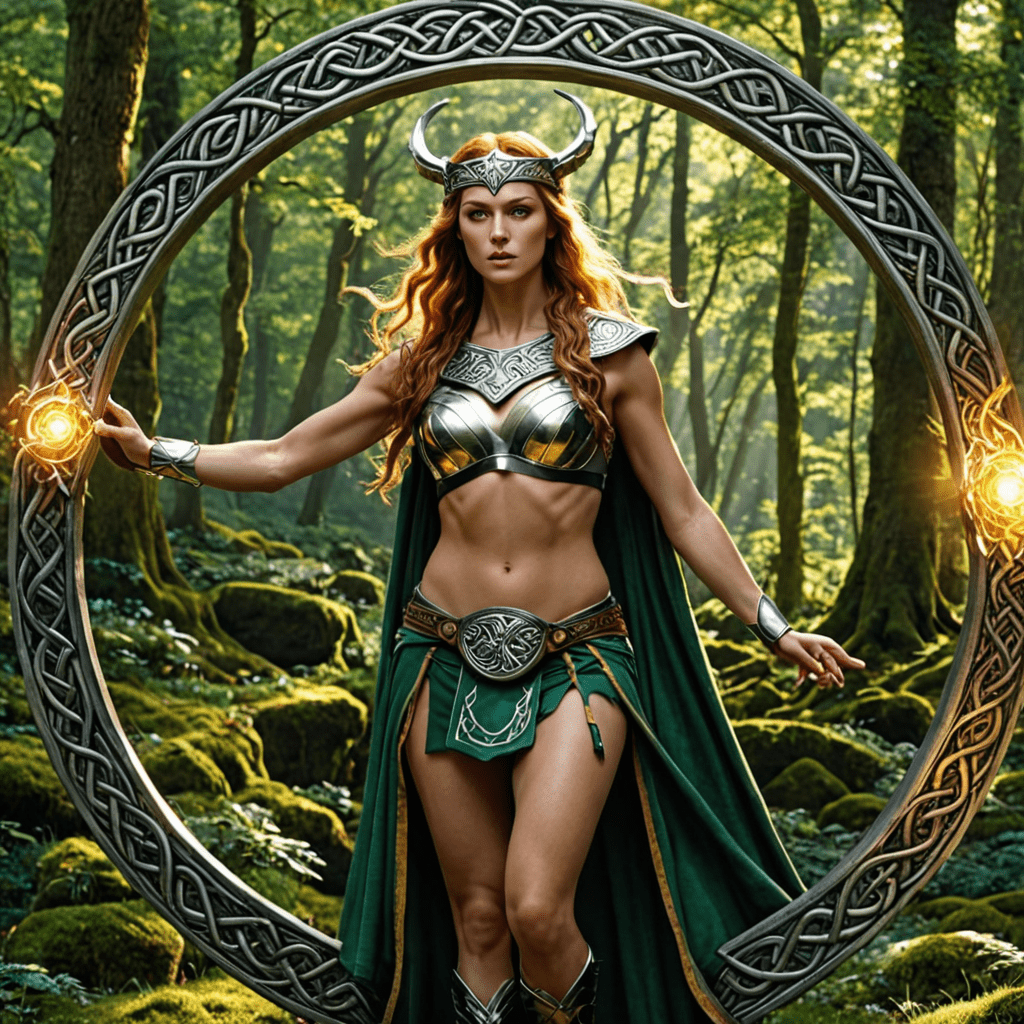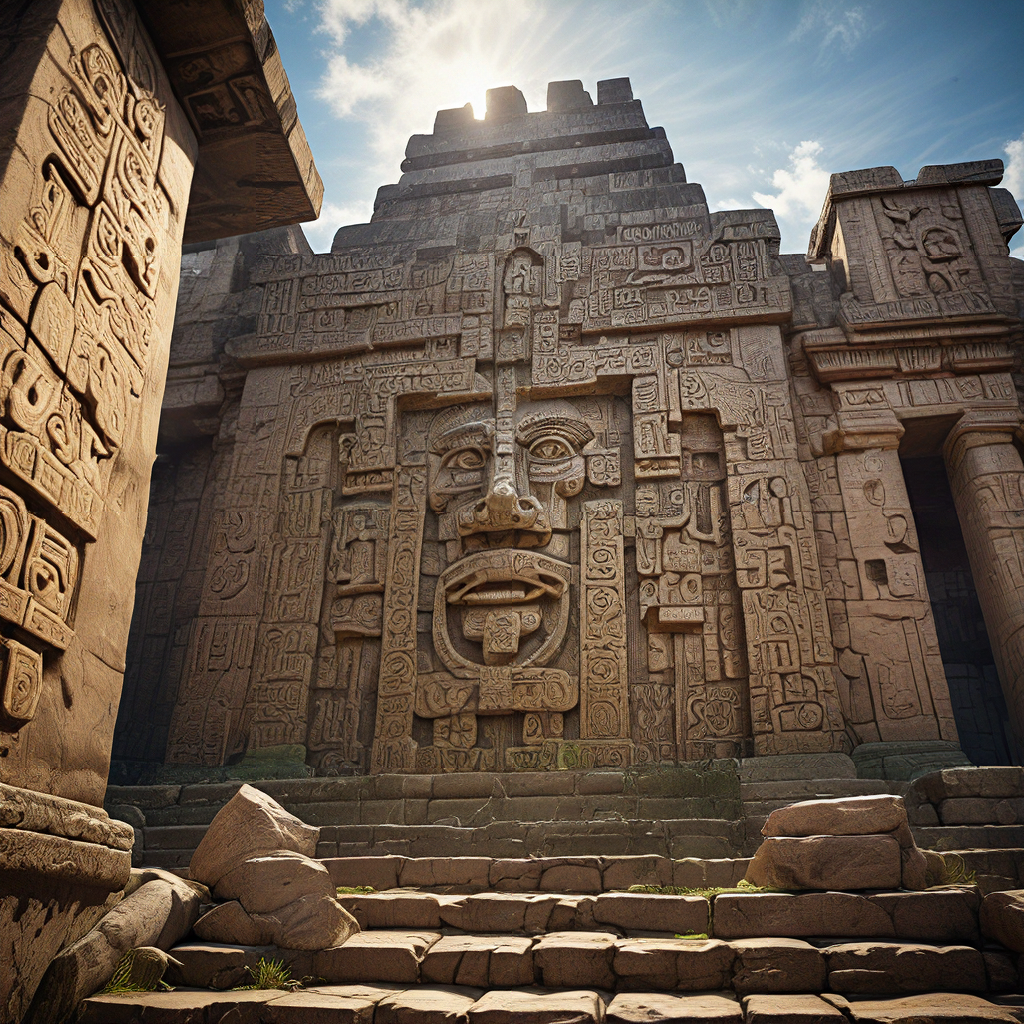Baltic Underworld: A Realm of Guardians
The Baltic Underworld, a place shrouded in mystery and intrigue, is an integral part of Baltic mythology, a rich tapestry of stories, beliefs, and traditions that have captivated generations. This realm, often referred to as "the otherworld," holds a unique significance in Baltic culture, serving as both a destination for the departed and a realm of powerful guardians.
The Realm of the Dead: A Glimpse into the Baltic Underworld
Unlike the fiery pits and tormented souls often associated with underworlds in other mythologies, the Baltic Underworld is portrayed as a place of shadows, secrets, and quiet stillness. It exists in a dimension separate from the living world, a realm where the souls of the deceased journey after death. The exact nature of the Baltic Underworld varies across different Baltic traditions, but common themes emerge:
- A Place of Transition: The Baltic Underworld is not a final resting place but rather a temporary stage where souls undergo a process of transformation before reaching the final destination, whether it be a paradise or a place of punishment.
- A Realm of Shadows: The Baltic Underworld is often described as a dark and shadowy realm, a place where light is scarce and only a faint glimmer of life persists.
- The Presence of the Dead: The souls of the deceased are believed to inhabit the Underworld, where they continue to exist, albeit in a different form.
The Guardians of the Underworld: Divine Beings and Their Roles
This mysterious realm is guarded by powerful divine beings, each with their own distinct roles and responsibilities:
- Dievas: The supreme deity of the Balts, Dievas is believed to oversee the Underworld and its inhabitants. He holds ultimate authority over the fate of the dead.
- Laima: The goddess of fate and destiny, Laima plays a significant role in determining the fate of souls after death, She guides their journey through the Underworld and decides their final destination.
- Velnias: The Baltic devil, Velnias, is associated with evil and darkness. He is believed to dwell in the Underworld, tempted souls and punish those who have led immoral lives.
- Javelis: The god of the dead, Javelis, is responsible for guiding souls into the Underworld. He also oversees the rituals and offerings made to the deceased.
The Role of Death in Baltic Mythology: A Complex and Revered Force
Death is not feared in Baltic mythology but rather revered as a natural part of the cycle of life. The Balts understood death to be a transformative experience, a journey into the unknown and a passage into another realm.
- Death as a Passage: The Balts saw death as a transition, a journey from the world of the living to the world of the dead. It was a time of transformation and change.
- Respect for the Dead: The Balts had a deep reverence for their ancestors and believed that the spirits of the dead could influence the lives of the living.
- Rituals and Offerings: Rituals and offerings were performed to appease the spirits of the dead and ensure their peaceful transition to the Underworld.
The Journey to the Underworld: Trials and Transformations
The journey to the Underworld is described as a challenging and transformative experience. It is a time of trials and tribulations, a test of one's character and moral compass.
- Crossing the River: The souls of the deceased must cross a river to enter the Underworld. This river can be seen as a symbolic representation of the transition between life and death.
- Meeting the Guardians: As they journey through the Underworld, souls encounter the guardians and deities who oversee the realm. These encounters determine the fate of the soul.
- Trials and Judgment: The souls are often judged based on their past actions and deeds. The Balts believed that good deeds would be rewarded while those who have led immoral lives faced punishment.
The Dwellers of the Underworld: Spirits, Souls, and Otherworldly Beings
The Baltic Underworld is home to a diverse cast of characters, including spirits, souls, and otherworldly beings:
- The Spirits of the Dead: The souls of the deceased reside in the Underworld, where they continue to exist in a spiritual form.
- Otherworldly Beings: The Underworld is also inhabited by various mythical creatures, such as fairies, demons, and goblins. These beings often play a role in the stories and tales associated with this realm.
- The Guardians of the Underworld: The guardians of the Underworld, such as Dievas, Laima, and Javelis, are powerful beings who oversee the realm and its inhabitants.
The Underworld in Baltic Folklore: Narratives and Rituals
Baltic folklore is rich with tales and stories that depict the Underworld and its inhabitants. These narratives offer glimpses into the beliefs and anxieties surrounding death and the afterlife. Stories often revolve around the journey of the deceased to the Underworld, the trials they face, and their interactions with guardians and otherworldly beings. Some common themes found in these narratives include:
- The Trials of Death: Tales often depict the deceased facing challenges and trials on their journey to the Underworld. These trials are often symbolic representations of the challenges and moral dilemmas faced in life.
- The Temptations of Velnias: The Baltic devil, Velnias, is often portrayed as a trickster figure who tempts souls and leads them astray. Stories of his temptations and the consequences of succumbing to his influence serve as cautionary tales.
- The Role of Spirits and Otherworldly Beings: Stories often feature interactions between the deceased and various spirits and mythical creatures inhabiting the Underworld. These encounters can be both benevolent and malevolent, shaping the soul's journey and fate.
Rituals played a significant role in Baltic culture, particularly those related to death and the afterlife. These rituals aimed to honor the deceased, appease their spirits, and ensure a smooth transition to the Underworld. Common rituals include:
- Funeral Rites: Elaborate funeral rites were performed to commemorate the deceased and prepare their souls for the journey to the Underworld.
- Offerings and Sacrifices: Offerings of food, drink, and precious objects were often placed in the grave to appease the spirits of the deceased and provide them with necessities in the afterlife.
- Memorial Services: Memorial services were held to honor the deceased and remember their contributions to the community.
The Influence of Slavic Mythology: Parallels and Contrasts
Baltic mythology, particularly with regards to the Underworld, has strong connections to Slavic mythology. Both cultures share similar beliefs and imagery, with an emphasis on the cyclical nature of life and death, the importance of honoring ancestors, and the existence of a realm of the dead.
- The Realm of the Dead: Both Baltic and Slavic mythologies feature a realm of the dead known as "Nav" or "Navia" in Slavic mythology, and "Anapilis" or "Požemė" in Baltic mythology. These realms are often depicted as places of shadows, secrets, and quiet stillness.
- Guardians and Deities: Similar divine beings, such as the god of the dead, and the figure of the devil, are found in both mythologies.
- Rituals and Beliefs: Similar rituals and beliefs surrounding death, such as elaborate funeral rites and offerings to the dead, are common to both cultures.
However, there are also notable differences:
- Emphasis on Fate: Baltic mythology places a strong emphasis on the role of fate and destiny, particularly the goddess Laima, who guides the souls of the deceased. Slavic mythology, on the other hand, focuses more on the importance of honor and the role of ancestors.
- Nature of the Underworld: The Baltic Underworld is often depicted as a more neutral and less fearsome place compared to the Slavic Underworld, which is often portrayed as a place of darkness and punishment.
Archaeological Evidence: Material Culture and the Underworld
Archaeological evidence provides insights into the beliefs and practices surrounding death and the afterlife in Baltic cultures. Artifacts found in burial sites offer tangible evidence of the rituals and traditions associated with the Underworld:
- Grave Goods: Grave goods, such as jewelry, weapons, tools, and food offerings, provide insights into the beliefs about the afterlife and the needs of the deceased in the Underworld.
- Burial Practices: Burial practices, such as the orientation of graves, the use of burial mounds, and the placement of bodies, reveal cultural beliefs about death and the journey to the Underworld.
- Symbolic Imagery: Symbolic imagery found in archaeological artifacts, such as depictions of deities, animals, and otherworldly beings, provide clues about the beliefs and practices surrounding death and the afterlife.
The Impact of Christianity: Transformation and Survival of Baltic Beliefs
The arrival of Christianity in the Baltic region had a significant impact on local beliefs and practices. Many pagan beliefs and rituals were suppressed or transformed to align with Christian teachings. However, elements of Baltic mythology, including the Underworld, have survived in various forms:
- Folklore and Legends: Stories and legends about the Underworld and its inhabitants continued to be passed down through generations, often blending with Christian themes.
- Folk Customs: Some folk customs and practices, such as those related to death and ancestor worship, retained elements of pre-Christian beliefs.
- Modern Interpretations: In modern times, there has been a renewed interest in Baltic mythology, with academics, artists, and writers reinterpreting and reimagining the Underworld and its significance in contemporary culture.
Modern Interpretations of Baltic Underworld Mythology: Contemporary Relevance and Inspiration
Baltic mythology continues to exert a strong influence on contemporary culture, inspiring artists, writers, and musicians to explore its themes and imagery. The Underworld, in particular, remains a rich source of inspiration, serving as a backdrop for various artistic expressions:
- Literature: Authors use the Underworld as a setting for their works, exploring themes of death, transformation, and the journey of the soul.
- Music: Folk musicians draw inspiration from the Underworld and its mythology to create music that connects with ancient traditions and contemporary themes.
- Visual Arts: Visual artists use the Underworld as a source of inspiration, creating paintings, sculptures, and other forms of art that capture the essence of this mysterious realm.
- Film and Television: The Underworld and its mythology have been incorporated into various films and television series, often serving as a setting for fantasy, horror, and supernatural narratives.
FAQ:
Q: Was there a specific location in the Baltic world that was seen as the entrance to the Underworld?
A: There wasn't a single, specific location. The Underworld was seen as a separate dimension.
Q: How did the Balts view death?
**A: ** Death was seen as a natural part of life's cycle, a transition, not something to be feared.
Q: Is the Baltic Underworld similar to the "Hades" of Greek mythology?
A: No. The Baltic Underworld is distinct. It is not fiery, nor a place of torment like Hades.
Q: Did the Balts believe in reincarnation?
A: While the Baltic Underworld was not a final destination but a stage of transition, information on reincarnation is unclear. It's not a central aspect of their beliefs.
Q: Is the Baltic Underworld a place that people could visit while still alive?
A: No. The Baltic Underworld was a realm for the dead, not a place for the living to go.
Q: How does the Baltic Underworld differ from the Underworlds of other cultures?
A: The Baltic Underworld is more focused on transition, a passage to a new state. Other cultures may depict their underworlds as places of specific reward, punishment, or eternal existence.



